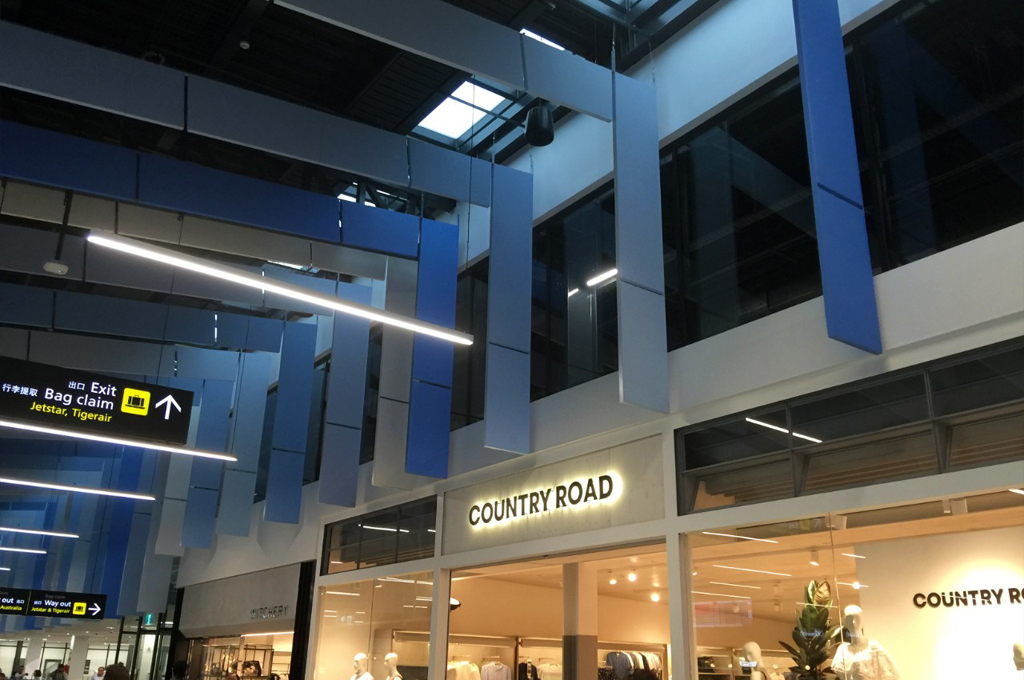
When designing a space where sound control is a priority, understanding the range of acoustic solutions is essential. Among the many options available, Acoustic Baffles Ceiling systems stand out as a highly effective and versatile choice. But how do they compare to other acoustic treatments like acoustic wall panels, ceiling tiles, or soundproofing barriers? Let’s delve into the unique benefits and applications of acoustic baffles ceiling systems and see how they stack up against other alternatives.
What Are Acoustic Baffles Ceiling Systems?
Acoustic baffles ceiling systems consist of vertically hanging panels designed to absorb sound. These panels are typically suspended from the ceiling, creating a visually appealing and functional solution for noise control. Made from sound-absorbing materials like foam, polyester, or fiberglass, baffles are often used in large spaces like auditoriums, open-plan offices, gyms, and industrial areas.
Key Features of Acoustic Baffles Ceiling
Superior Sound Absorption: Acoustic baffles reduce echo and reverberation by absorbing sound waves from all directions.
Aesthetic Versatility: Available in various shapes, colors, and finishes, they can complement the design of modern interiors.
Space Efficiency: As they hang vertically, baffles do not occupy wall or floor space, making them ideal for areas with limited surface availability.
Customizable Designs: From simple rectangular designs to complex patterns, acoustic baffles offer customization to suit any environment.
Comparing Acoustic Baffles Ceiling with Other Acoustic Treatments
1. Acoustic Wall Panels
Purpose: Acoustic wall panels are designed to reduce sound reflection by absorbing noise along wall surfaces.
Pros:
Easy to install on flat surfaces.
Ideal for spaces where sound control and visual appeal are required simultaneously.
Cons:
Limited to wall surfaces, reducing overall coverage in large, open spaces.
How Baffles Compare: Acoustic baffles ceiling systems offer broader sound absorption coverage since they target ceiling areas, addressing noise issues from multiple angles.
2. Acoustic Ceiling Tiles
Purpose: These are lightweight tiles fitted into a grid system on a ceiling, primarily used in commercial spaces.
Pros:
Seamless integration into existing ceiling grids.
Effective for spaces with a focus on ceiling-mounted sound control.
Cons:
Limited design flexibility.
May not be as effective in reducing noise in open areas.
How Baffles Compare: While ceiling tiles provide flat coverage, acoustic baffles excel in large, open spaces where vertical absorption is crucial for optimal noise control.
3. Soundproofing Barriers
Purpose: Designed to block sound transmission rather than absorb it, these barriers are often installed in walls, floors, or ceilings.
Pros:
Ideal for preventing sound leakage between rooms.
Effective for spaces requiring high levels of privacy.
Cons:
Not suitable for reducing echoes within a room.
More expensive and time-intensive to install.
How Baffles Compare: Acoustic baffles focus on sound absorption rather than sound blocking, making them better suited for environments like offices, restaurants, or theaters where reducing echo and improving clarity are priorities.
4. Acoustic Clouds
Purpose: Suspended horizontally from ceilings, acoustic clouds absorb noise and enhance sound quality.
Pros:
Aesthetic and functional.
Effective in targeted noise reduction.
Cons:
Less effective in covering large vertical spaces.
How Baffles Compare: While acoustic clouds focus on horizontal sound absorption, acoustic baffles ceiling systems cover vertical planes, offering enhanced noise control in larger areas.
Benefits of Choosing Acoustic Baffles Ceiling
Cost-Effectiveness: Compared to other options, baffles are cost-effective for large-scale installations requiring broad coverage.
Environmental Benefits: Many baffles are made from eco-friendly materials, making them a sustainable choice.
Ease of Installation: They are lightweight and can be easily installed without significant structural modifications.
Design Versatility: Acoustic baffles can double as design elements, enhancing the aesthetic appeal of a space.
When to Choose Acoustic Baffles Ceiling Over Other Treatments
Large, Open Spaces: In environments like gymnasiums or warehouses where noise bounces off ceilings and walls, baffles excel in reducing reverberation.
Spaces with Limited Wall Surfaces: If walls are occupied by windows, artwork, or other features, baffles provide sound absorption without compromising aesthetics.
Focus on Design and Functionality: For architects and designers seeking a blend of acoustic performance and visual appeal, baffles are a top choice.
Conclusion
While there are many effective acoustic treatments available, the Acoustic Baffles Ceiling stands out as a versatile and highly efficient solution for controlling noise in various spaces. Its ability to absorb sound from multiple directions, coupled with its aesthetic and functional advantages, makes it a strong competitor to other treatments like wall panels, ceiling tiles, and soundproofing barriers. Whether you’re designing an office, restaurant, or auditorium, investing in acoustic baffles ceiling systems ensures a quieter, more comfortable environment that balances style and functionality.